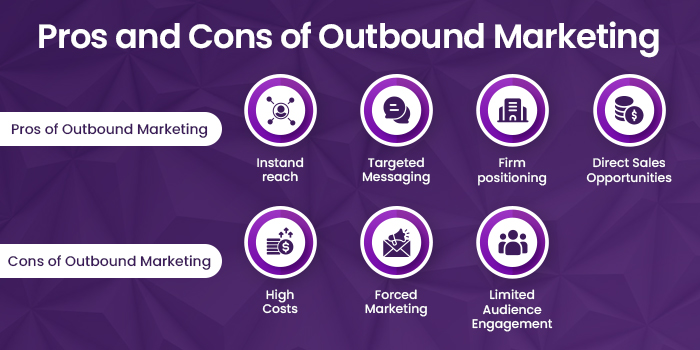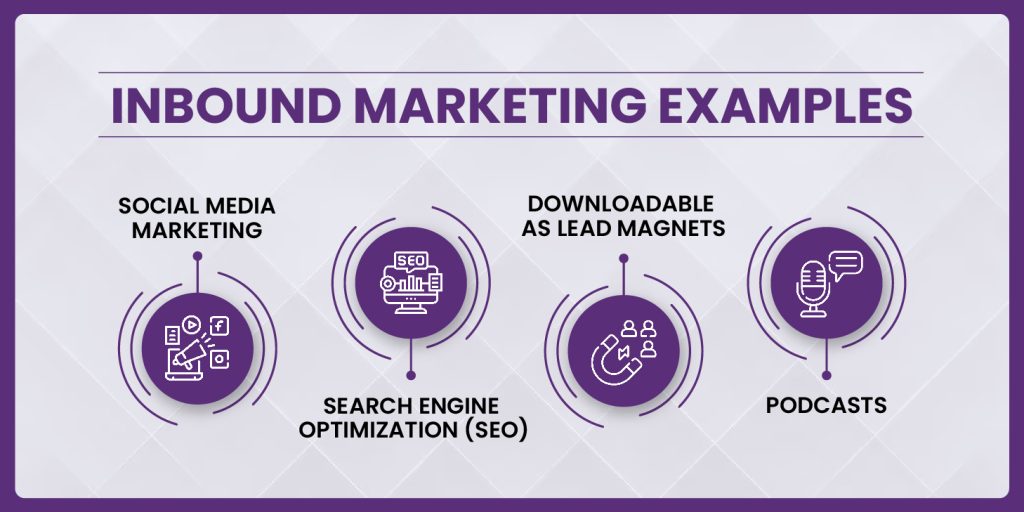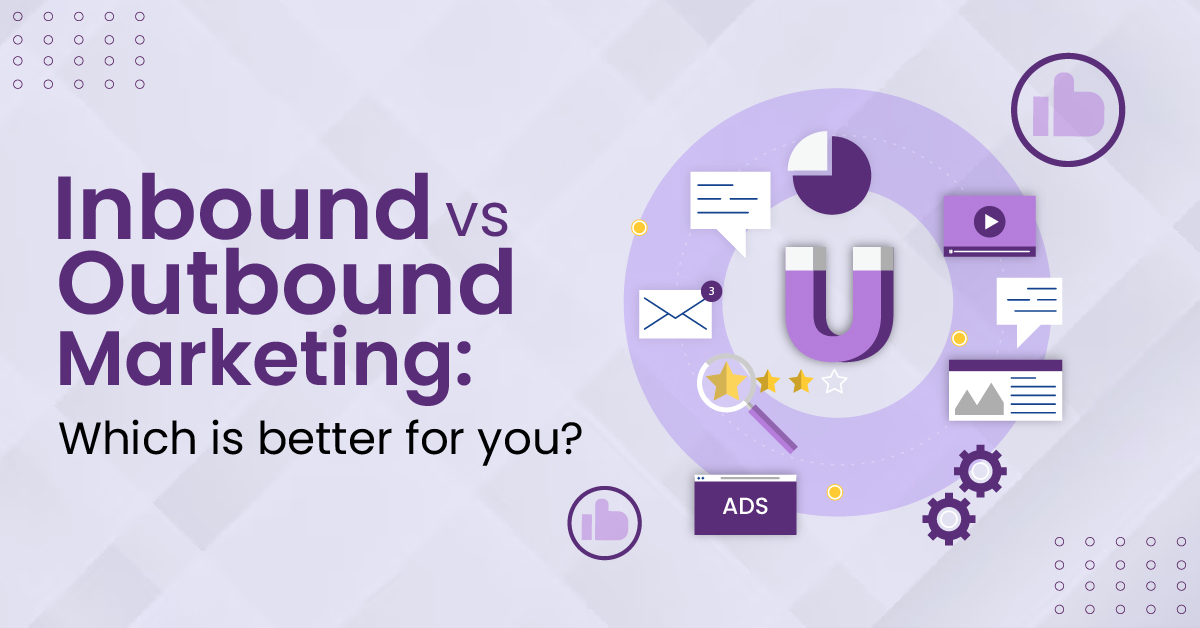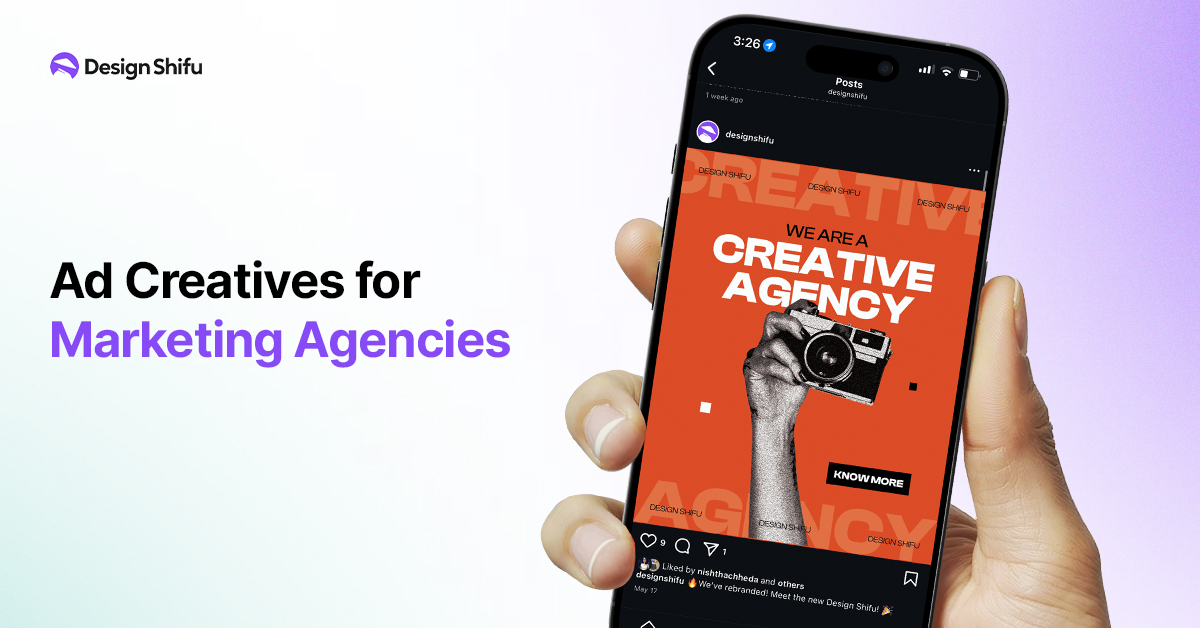Marketing without strategy is like throwing darts in the dark. You want to acquire more customers—but how do you get started? It can be difficult to know your way through the maze of growth marketing approaches on offer.
One of the largest arguments in the small business world is Inbound vs Outbound—and what really warrants your time and dollars!
We will take you through the pros and cons, with real examples for both strategies—so you can stop guessing and grow with confidence. Ready to settle the score on push vs pull marketing? Let’s go and see which strategy will be worth your precious focus in 2025!
TL;DR
In this blog, we clearly lay it all out for you.
- What is the real difference between inbound and outbound marketing?
- Which one has a better ROI?
- And how do you determine which one is right for your brand?
Inbound vs. Outbound Marketing
When it comes to marketing strategies, two main approaches warrant consideration: inbound and outbound marketing. In one form of marketing, you aim to attract users and wait for them to come to you, while the other involves proactive outreach. Let’s break it down for you:
Inbound marketing centers on drawing people in through content creation and distribution channels, such as social media posts and blogs. In contrast, outbound marketing takes a more proactive approach by actively disseminating messages about products and the brand through methods like cold calling and advertising.
What Is Inbound Marketing?
In contemporary marketing, the core of inbound marketing revolves around content creation over the Internet. The goal is to reach a broader audience and establish brand recognition through content. In a nutshell, inbound marketing, a customer-centric approach, revolves around attracting and retaining customers through valuable content, personalized experiences, and engagement.
The objective is to build trust, establish authority, and foster lasting relationships.
Tactics include blogging, social media, SEO, email marketing, and content creation. Inbound marketing is cost-effective, measurable, and adaptable to changing customer needs. It focuses on creating valuable experiences for customers rather than interrupting them with unsolicited messages or ads.
By providing useful information and relevant content, inbound marketing helps businesses connect with their target audience and drive sales.
What Is Outbound Marketing?
With outbound marketing, you continuously pursue and actively push customers to make a purchase. Outbound marketing, a traditional approach, involves interrupting potential customers with advertising messages.
This includes TV and radio commercials, print ads, direct mail, and cold calling. While outbound marketing can be more expensive than inbound marketing, it can still be beneficial in specific situations. For instance, when targeting a specific audience with a highly tailored message.
Ultimately, the right marketing strategy depends on your business goals, target audience, and budget. Outbound marketing serves as an additional tool to reach prospective customers alongside inbound tactics.
Pros and Cons of Inbound Marketing

Pros of Inbound Marketing
Cost-Effective
Inbound marketing generally costs less as it requires investment in human resources and a few tools to make things happen. While inbound marketing is a suitable strategy for those looking to spend less on marketing, it takes some time to see results.
Focused Approach
Inbound marketing enables businesses to customize their content for specific target audiences based on demographics, behaviors, and preferences. This targeted approach can increase engagement and improve the likelihood of attracting quality leads.
Builds Authority
Providing valuable and educational content helps establish the business as an authority in its industry. By offering helpful information and solving problems for potential customers, trust and credibility are built, encouraging them to choose your business when making purchasing decisions.
Sustainable Growth
Inbound marketing strategies, such as optimizing website content and building a strong online presence, can yield long-term results. Once established, quality content continues to attract organic traffic and generate leads without incurring continuous high marketing costs.
Cons of Inbound Marketing
Time-Consuming
Creating high-quality content, optimizing it for search engines, and engaging with your audience can be time-consuming. It often takes time to see significant results and requires consistent effort in content creation and distribution.
Difficult to Track ROI
Measuring the exact ROI of inbound marketing efforts can be challenging. It may take some time to see the tangible impact on sales or conversions, making it difficult to accurately quantify the success of the strategy.
Dependency on Algorithms and Trends
Search engine and social media algorithms can change, affecting the visibility of your content. Your traffic and lead generation may be impacted if major platforms modify their algorithms or policies, making it crucial to adapt and optimize strategies accordingly.
Competitive Landscape
Inbound marketing is widely adopted, particularly in competitive industries. Standing out and gaining visibility among numerous competitors can be challenging, necessitating unique and compelling content to capture the audience’s attention.
Pros and Cons of Outbound Marketing

Pros of Outbound Marketing
Instant Reach
Outbound marketing, such as television commercials, radio ads, or print advertisements, allows a business to quickly reach a broad audience. This approach helps create brand awareness and generate immediate visibility for the product or service.
Targeted Messaging
While outbound marketing reaches a large audience, it can also be segmented to target specific demographics or geographic areas. Tailoring messages to a specific audience can enhance relevance and improve the chances of engagement.
Firm Positioning:
With outbound marketing, the business has control over the message, design, and timing of the marketing campaign. This control ensures a consistent brand image and messaging, ensuring the intended message is delivered as planned.
Direct Sales Opportunities:
Certain outbound marketing strategies, like telemarketing or direct mail, provide opportunities for immediate sales conversions. Direct engagement with potential customers allows for direct pitches and sales discussions, potentially leading to quicker conversions.
Cons of Outbound Marketing:
High Costs:
Outbound marketing can be expensive, especially for small businesses with limited budgets. Advertising on traditional platforms like television, radio, or print media often involves substantial costs, making it a less feasible option for smaller enterprises.
Forced Marketing:
Outbound marketing techniques can be perceived as intrusive and annoying by consumers, leading to resistance and a negative brand image. Many people actively avoid advertisements through ad blockers, skip ads, or unsubscribe from promotional emails, reducing the effectiveness of these campaigns.
Limited Audience Engagement:
Outbound marketing typically allows for limited audience engagement compared to inbound marketing. The audience has limited opportunities to interact, provide feedback, or ask questions, which can result in decreased overall engagement and customer involvement.
Balancing both inbound and outbound marketing strategies based on the specific needs and capabilities of the small business can be an effective approach to maximize reach and engagement while optimizing costs and resources.
Inbound Marketing Examples

Here are some examples of inbound marketing that you can use for your small business:
Social Media Marketing:
Sharing relevant content, engaging with your audience, and running targeted advertising campaigns on social media platforms like Facebook, Instagram, LinkedIn, and Twitter can help you connect with your target audience and drive traffic to your website.
In case you need assistance with Instagram designs, consider Design Shifu. We offer unlimited graphic designs for a flat monthly fee. We also provide white-labeling solutions to creative agencies and businesses, should you need assistance with client work. Explore our subscription plans here to get started.
Search Engine Optimization (SEO):
Optimizing your website content for relevant keywords, improving website speed, ensuring mobile responsiveness, and obtaining quality backlinks are all SEO strategies that help your website rank higher in search engine results, driving organic traffic. This also establishes you as an authority if you start creating informative blog content.
Downloadables as Lead Magnets:
Creating downloadable resources such as e-books, whitepapers, templates, checklists, or guides can entice visitors to share their contact information. These resources are offered in exchange for their email addresses, facilitating lead generation.
Podcasts:
Creating and promoting podcasts on platforms like Apple Podcasts, Spotify, or Google Podcasts can help you reach a wider audience and provide valuable insights and discussions related to your industry.
Outbound Marketing Examples

Here are some common examples of outbound marketing for a small business:
Cold Calling:
It involves reaching out to prospective customers via phone calls, typically without any prior relationship or interaction. The term “cold” signifies the lack of warm leads or pre-existing connections with the individuals being contacted. The success rate of this strategy is comparatively lower, but it is often carried out on a large scale to achieve substantial results.
Events and Sponsorships:
Becoming a sponsor in an event or hosting an event related to your niche falls under outbound marketing. This allows you to reach a wider offline audience and generate leads that later become a part of your sales funnel.
Billboard Advertising:
Creative billboards by famous brands serve as examples of outbound marketing. These billboards are typically placed along busy roads or high-traffic areas to capture the attention of passing motorists and pedestrians. This approach increases brand recall.
Online Advertising:
Have you noticed the “Sponsored” tag on Google search results? That’s a form of online advertising. The objective is to create online advertisements that appear at the top of search engine results, websites, or social media profiles. Advertisers pay a fee each time a user clicks on or sees their ad.
SMS Marketing:
This is a primary means of reaching out. Companies send promotional messages to mobile devices and expect recipients to take action.
Frequently Asked Questions
Which is better, inbound marketing or outbound?
The choice between inbound and outbound marketing depends on your business goals and target audience. Inbound marketing can be cost-effective and attract high-quality leads, while outbound marketing is more direct and targeted. To achieve optimal results, it’s often best to use a combination of both strategies, considering factors such as budget, industry, and target market.
What’s More Effective, Inbound or Outbound Marketing?
When evaluating the effectiveness of inbound and outbound marketing, consider your industry, target audience, and marketing goals. Combining both strategies can yield optimal results. Measure success through analytics and data, and continuously refine your marketing strategy based on performance.
Is social media inbound or outbound marketing?
Social media can be used for both inbound and outbound marketing. When businesses post content that attracts potential customers, it falls under inbound marketing. On the other hand, paid advertising on social media that targets specific audiences is considered outbound marketing. The choice between these strategies depends on business goals and target audience.
Is outbound marketing declining in effectiveness?
Outbound marketing is experiencing a decline in effectiveness as consumer behavior evolves. People are becoming resistant to interruptive advertising methods used in outbound marketing. Inbound marketing, which focuses on valuable content creation, is gaining popularity. However, it’s essential to evaluate your target audience and industry before deciding on a strategy.
How useful is inbound marketing for online business?
Inbound marketing is extremely valuable for online businesses. It helps attract potential customers by providing valuable content that addresses their needs and questions. Strategies like SEO, social media marketing, and email marketing, build relationships and trust, leading to more conversions and customer loyalty.
Is going 100% on inbound marketing a bad idea?
Going all-in on inbound marketing can be risky because it might not generate enough leads. It’s crucial to strike a balance between inbound and outbound strategies. Outbound marketing allows you to quickly reach a broader audience, while inbound marketing focuses on building long-term relationships with customers. Finding the right mix depends on your target audience and goals.
Are inbound leads typically “better” than outbound leads?
Inbound leads are often considered superior to outbound leads. These leads come from potential customers who have already expressed interest in your product or service, which makes them more likely to convert. However, the effectiveness of inbound versus outbound marketing depends on your business goals and target audience.





